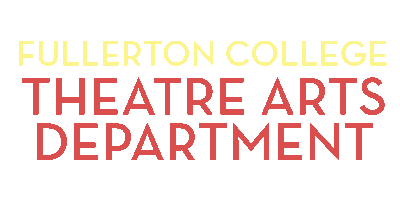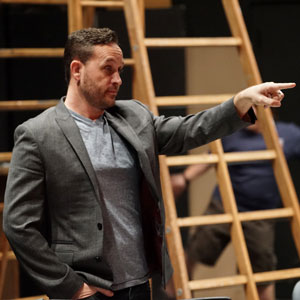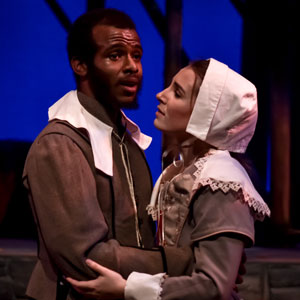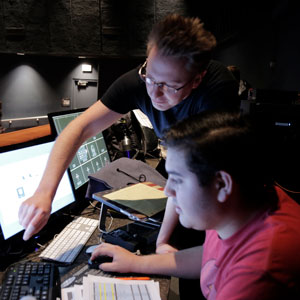'Assassins' Opening Night
— Fullerton College Hornet - Staff Writer - Sunday, March 10th, 2013Assassins opened up on Thursday, March 7 with the talent of the Fullerton College Theater Arts Department. The cast of production performed a believable piece of work, directed by Chuck Ketter, which investigated the American mind.
The show reflected a feeling of American history: from the clothing to the accents of the characters. The stage setting was genuine to the time of the stories and the visuals of the scenery were very detailed.
The effects of the show made a large impact on the entirety of the story. Each scene contained depth on the stage because of the slight details imposed on the positioning.
“The students are really excited about doing this material which makes directing not too difficult,” said Ketter when asked about directing.
The audience was drawn into the show as if they were involved. The lighting and scenery transitioned smoothly; the timing looked on point and the ensemble sound great. The actors sang with passion and seemed like they understood whom they were acting as. They were able to truly be their character, which made the show enjoyable to watch and be a part of.
The lighting did play a big role in the mood of this show, and it was interesting to learn that the lighting crew was full of beginners. There were a few unique effects in the production, for example when Abraham Lincoln was shot. The lighting was standard besides the few cool effects.
Many of the main characters had microphones, which was very nice because they were heard loud and clear. However, a couple characters either had no microphone, or theirs were not working, which caused a pull back of the audience, reminding viewers that it was a play and not real life.
The show produced laughs along with pessimism, hope and then victory. The characters portrayed a dark humor that had the audience chuckling and gasping.
The production examined a different angle on the murders of the Presidents, different than what children learn in school. It seemed the assassins’ side of the story might have revealed something unexpected by outsiders. Each murderer or attempted murder in the play had a back-story, causing the feeling that came upon him or her to kill. It explored various perspectives of the situations that most Americans are already familiar with and made them unfamiliar and new, which possibly could have lead to a psychological observation within the audience’s minds.
The story traveled the minds of the American man and woman, child and teen, rich and poor, and those who seemed happy or sad. Every character in the show was a dreamer, and they all wanted the same thing through different events. Each desired to make some kind of point, and examined what could happen just by giving a single person any kind of power.
It was probably easy for some of the audience to relate to the story, but others looked at it like they were reading history books. It was not obvious what all the viewers felt about the perspective of the play on the murders, whether they liked it or not.
Thomas Cormons, and current student at Fullerton College, said how much he appreciated the show.
“It was fantastic. I enjoyed the show!” Cormons said. “There were a lot of assassinations I didn’t know about that I’ll be looking up later on the Internet.”
The play was a little vague in explaining the time and place because there were different pieces of history all mixed up in it. However, it was brought together in the end when everyone came together.
There was an immediate outcome of curiosity and thought on the audience, and they seemed to be satisfied walking out of the theater, overall instigating a product of thought into the audience that night.








